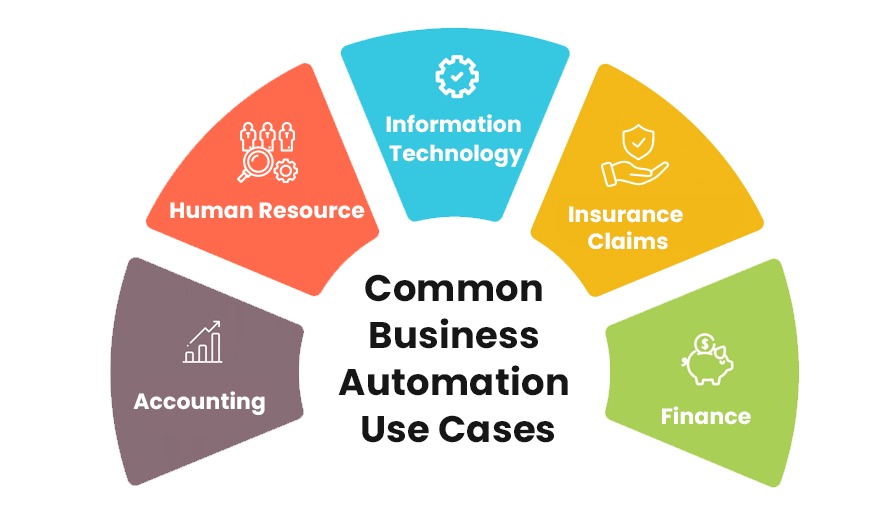
67% of companies are using business process automation while 97% of businesses believe that digital transformation and automation go hand in hand. These statistics tell us that even smaller organizations are going to automate their internal processes. However, not every business that has implemented process automation is using it well. Often, mistakes are made that increase the challenges rather than increase productivity. Ensuring that the investment made in automation is not wasted, requires a few checks and counterbalances to be in place.
Automation technologies changing our lives
Automation is right there in our everyday lives making everything easier. Washing machines have microcontrollers that run the load on preselected settings and automatically switch off when the cycle is done. Then they are the automatic transmission vehicles that have taken over from manual cars. What about the power-backup devices that automatically switch on when the regular power supply goes off? Look around and much in our world is already automated.
The business world is just as quickly automating its workflows. The purpose of business process automation (BPA) is to reduce human effort. BPA refers to software programs that automate repeatable, multistep business transactions. They are usually complex because they can span multiple IT systems across various departments and are usually tailored specifically to the needs of the organization.
The most common business processes that are automated to improve efficiency are :
- In human resourcesfor hiring, employee onboarding and retention analytics
- Insuranceindustries use automation to process a large volume of claims
- Healthcareuses automation for benefits verification
- Financedepartments automate their accounts receivable process
- In logistics and supply chains, errors in manual processes are cut down by process automation. It improves communication with suppliers, distributors, and customers.
- In customer support functions, companies are using AI chatbots to improve customer experience.

These are just a few of the business functions that process automation has made a big impact. While it is really hard to think of automation technology as going “bad” but there are pitfalls of poor automation that many businesses unknowingly make themselves vulnerable to.
Beware of these don’ts in business process automation
Business automation has become more accessible and affordable and that is why it is now considered the new normal. These are some common misconceptions that businesses almost never prepared themselves for :
- Don’t expect automation to be error-free
- Don’t expect it to replace human labor
- Don’t start out with automating a complex process
Automation is reliant on human programming at the end of the day. If the automation algorithm was not designed properly or the data sets the AI model was trained on are faulty, there will be flaws that can impact business processes. The problem is that if there is no human supervision, these errors may be difficult to catch. It is important to have a reliable technological team with proven past projects that vouch for their expertise. Once the implementation is in place is not the time to find out there was a mistake in hiring.
Automation is meant to replace tedious, repetitive and error-prone processes. This means that not all processes can be automated and recognizing where AI can make an impact is important.
AI uses data to identify informational patterns to carry out tasks faster, accurately and tirelessly. However, no AI algorithm can be intuitive and judge changing situations and respond to them. Most AI models are trained through supervised learning and if they encounter anything outside this they will not be able to proceed. AI should only be applied to a problem for which the manual steps are in black and white and the solution outcomes are predetermined. If there are too many unknowns then that business process may not be suitable for automation.
Some types of automation come at a high cost, need to be programmed from scratch or even need the organization to upstaff. Such workflows might not be the best way to start out the automation journey. It is always better to start out with simpler processes, preferably with low-code customizable solutions that have a lower run cost and higher ROI. You can venture into more complex processes, once you have seen success with your very first customized automation process.

Do’s of business automation
One never launches a new product or ventures into a new market without doing a market analysis. Similarly, look at your competitors when taking the first step in incorporating automation technologies into your business workflow. This information may not be easily available but the do’s below are definite steps to follow.
- Do include human supervision
- Do have an ROI measurement plan from the start
- Get employee buy-in
A hybridized model of automation that includes human supervision is always recommended in initial integration. As already said, AI algorithms are written by humans and the possibility of unconscious bias or error needs to be caught out in the working environment. Even if all goes well, future innovation will need new models to be trained and so an evaluation process needs to be included.
While business automation is becoming affordable, there must be a return on investment. The total cost of the new system is the upfront cost and the cost of resources to maintain it. Is this expenditure offset by the increase in efficiency and human hours saved? This metric must be consistently measured. If you are getting a net benefit then hurray your business automation strategy is paying off.
We have all heard the stories of machines replacing humans and that’s often the reason for employees to be wary. It is necessary to put it across that automation will cut the tedious routine out of their jobs and create a collaborative workspace. In a Gartner 2021 Employee Technology Survey, 29% said they were not informed about implementation and 39% said they were not part of the design/concept phase or asked to give feedback. These statistics are quite damning. It is essential to communicate with employees right through the process, either through emails or newsletters. This makes the team feel engaged and valuable and understand that automation technology will assist rather than replace their roles.
Finally, success in business process automation comes down to technologies used in the implementation along with a cohesive plan of integration. Get in touch with us at iTech and we will help you identify manual processes that can incorporate automation. iTech is an automation and custom software development company with offices in Dallas and our development center in India. We have vast experience in crafting successful digital transformation stories for companies in diverse industries. Let’s Talk.









